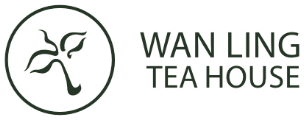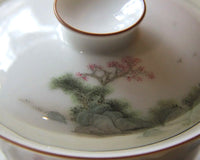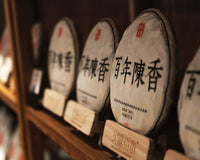Bulang: A Puerh Mountain
The Puerh tea region of Bulang Mountain is an ancient terroir covering an area of around 1,000 km2. To put that into perspective, what is often sold as a 'single mountain' is roughly three times the size of the Isle Of Wight in southern England.
Much of this land is heavily-forested, unyielding mountainous terrain, apart from those rare patches of earth given over to settlements. Altitudes range from 500m to around 2000m above sea level. Ancient tea gardens average at around 1,200m above sea level.
The climate is sub-tropical with added elements provided by warm, lush river valleys. The hot, dry air is only disturbed by heavy downpours during the rainy summer months.
The Flavour of Bulang: "Only when one understands Bulang tea, can they truly be called tea folk"
Over 1,500 acres of ancient tea gardens lie within this area of outstanding natural beauty, mostly concentrated in the east. Bulang is not classified as one of the 'Six Famous Puerh Mountains' but it is one of the most famous of the 'new' Puerh mountains and is one of the premier tea zones located within the thriving Puerh region of Menghai. [1]
The accolade of being amongst the 'Six' is bestowed only on those tea areas recognised by the Jinghong Government in the 17th century. They were coincidentally in less 'barbaric' zones.

Bulang Mountains - the extreme south of China
For a tea terroir Bulang Mountain is about as remote and far-flung from Beijing as is geographically possible, and yet still be Chinese. It is also one of the hottest, culturally rich, and most bio-diverse tea regions in Yunnan; it boasts a cultural and physical landscape more akin to the border countries of Myanmar and Laos, or northern Thailand. Teas produced in this area are known to be full-bodied and distinctive, exhibiting strong 'Cha Qi'; a fitting shorthand of this complex and exotic landscape.

Biodiversity in the mountains and forests of the Bulang region
There are around 50 villages located within the Bulang Mountain region, most of which produce tea and other staples, such as corn, sugar cane and fruit. Unsurprisingly, the quality of tea from Bulang can vary quite wildly, and it is for this reason that tea is increasingly being sold bearing the name of specific villages.
Not all villages are created equal; less famous tea villages have little marketing appeal and sell their bulk leaf (or 'Mao Cha') to larger companies, who then blend the teas together and sell them as 'Bulang Mountain Tea' or process them further into Ripe ('Shu') Puerh.

The more noteworthy the tea, the more famous the village, and the more likely they will be able to switch to tea monoculture. Of the more famous villages, none can compare with Lao Banzhang, a Hani minority village, whose teas have intense aromas and narcotic 'Cha Qi' and have become the Puerh gold standard - both in price and tasting quality.
The emergence of Lao Banzhang, probably the first tea village in China to make national news on a regular basis, has raised the profile of Bulang Mountain teas. However, there is more to Bulang Mountain than Lao Banzhang: several other tea villages produce tea of exceptional quality too.

[1] Lin Shi Xing (ed.), Shan Tou Cha, Kunming: Yunnan Keji Chubanshe











